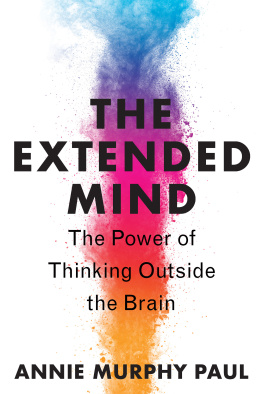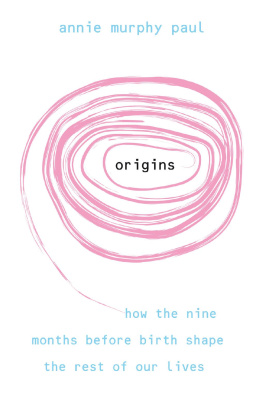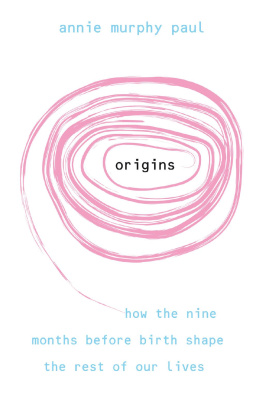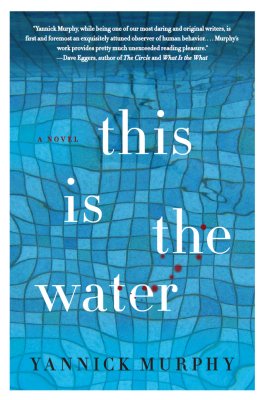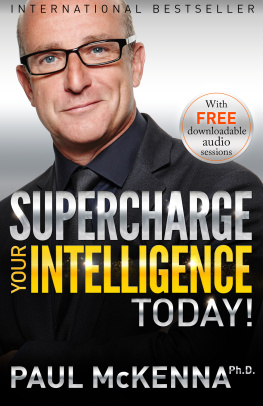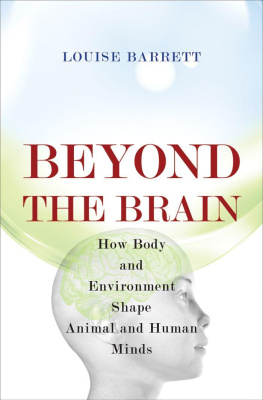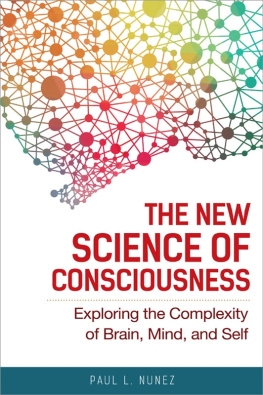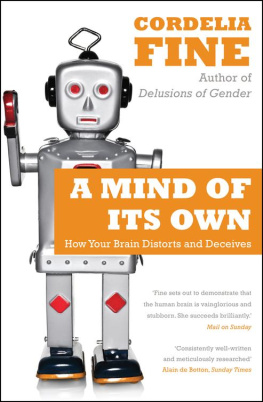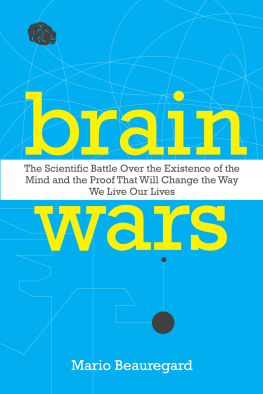For Sally, Billy, and Frankie
Copyright 2021 by Anne Paul
All rights reserved
For information about permission to reproduce selections from this book, write to or to Permissions, Houghton Mifflin Harcourt Publishing Company, 3 Park Avenue, 19th Floor, New York, New York 10016.
hmhbooks.com
Library of Congress Cataloging-in-Publication Data
Names: Paul, Annie Murphy, author.
Title: The extended mind : the power of thinking outside the brain / Annie Murphy Paul.
Description: Boston : Houghton Mifflin Harcourt, 2021. | Includes bibliographical references and index.
Identifiers: LCCN 2020039127 (print) | LCCN 2020039128 (ebook) | ISBN 9780544947665 (hardcover) | ISBN 9780544947580 (ebook) | ISBN 9780358611516 | ISBN 9780358611585
Subjects: LCSH : Mind and body. | Thought and thinking. | Cognition.
Classification: LCC BF 161 . P 38 2021 (print) | LCC BF 161 (ebook) | DDC 128dc23
LC record available at https://lccn.loc.gov/2020039127
LC ebook record available at https://lccn.loc.gov/2020039128
Cover design by Mark Robinson
Author photograph Stephanie Anestis Photography
Cover Image: ISpiyaphong / iStock / Getty Images
v1.0521
Prologue
W HEN YOURE WRITING a book about how to think well, your sourcesthe cognitive scientists, psychologists, biologists, neuroscientists, and philosophers who all have something to contribute on the subjectwill often seem to be speaking, via their work, directly to you: Yes, you there, writing a book! They cajole and insist, they argue and debate, they issue warnings and pass judgment; as you lay out their recommendations for the reader, they inquire pointedly: Are you taking your own advice?
I entered into one such intimate exchange when I read, with a jolt of recognition, a passage written more than 130 years ago; it was as if the author were reaching through the pages that lay open on my desk. Making the meeting more intense, the writer in question was a distinctly intimidating character: the German philosopher Friedrich Nietzsche, he of the severe gaze and vaguely sinister mustache.
How quickly we guess how someone has come by his ideas, Nietzsche slyly observed, whether it was while sitting in front of his inkwell, with a pinched belly, his head bowed low over the paperin which case we are quickly finished with his book, too! Cramped intestines betray themselvesyou can bet on thatno less than closet air, closet ceilings, closet narrowness.
The room in which I was writing suddenly seemed rather airless and small.
I encountered his words as I was working on a chapter about how bodily movement affects the way we think. The quote from Nietzsche appears in a book titled A Philosophy of Walking, by the contemporary French philosopher Frdric Gros; Gros has his own thoughts to add. Dont think of a book as issuing only from an authors head, he advises. Think of the scribes body: his hands, his feet, his shoulders and legs. Think of the book as an expression of physiology. In all too many books the reader can sense the seated body, doubled up, stooped, shriveled in on itself.
My seated body shifted guiltily in its chair, which it had occupied all morning.
Far more conducive to the act of creation, Gros continues, is the walking bodywhich, he says, is unfolded and tensed like a bow: opened to wide spaces like a flower to the sun. Nietzsche, he reminds us, wrote that we should sit as little as possible; do not believe any idea that was not born in the open air and of free movement.
The philosophers were ganging up on me; I closed my laptop and went for a walk.
I was acting not only on their say-so, of course; by this point in my research I had read dozens of empirical studies showing that a bout of physical activity sharpens our attention, improves our memory, and enhances our creativity. And in fact, I found that the forward movement of my legs, the flow of images past my eyes, the slight elevation of my heart rate did work some kind of change on my mind. Upon sitting back down at my desk, I wasted no time resolving a knotty conceptual problem that had tormented me all morning. (I can only hope that the prose I produced also retains and expresses the energy, the springiness of the body, in Gross formulation.) Could my brain have solved the problem on its own, or did it require the assist provided by my ambulatory limbs?
Our culture insists that the brain is the sole locus of thinking, a cordoned-off space where cognition happens, much as the workings of my laptop are sealed inside its aluminum case. This book argues otherwise: it holds that the mind is something more like the nest-building bird I spotted on my walk, plucking a bit of string here, a twig there, constructing a whole out of available parts. For humans these parts include, most notably, the feelings and movements of our bodies; the physical spaces in which we learn and work; and the other minds with which we interactour classmates, colleagues, teachers, supervisors, friends. Sometimes all three elements come together in especially felicitous fashion, as they did for the brilliant intellectual team of Amos Tversky and Daniel Kahneman. The two psychologists carried out much of their groundbreaking work on heuristics and biasesthe human minds habitual shortcuts and distortionsby talking and walking together, through the bustling streets of Jerusalem or along the rolling hills of the California coast. I did the best thinking of my life on leisurely walks with Amos, Kahneman has said.
Many tomes have been written on human cognition, many theories proposed and studies conducted (Tversky and Kahnemans among them). These efforts have produced countless illuminating insights, but they are limited by their assumption that thinking happens only inside the brain. Much less attention has been paid to the ways people use the world to think: the gestures of the hands, the space of a sketchbook, the act of listening to someone tell a story, or the task of teaching someone else. These extra-neural inputs change the way we think; it could even be said that they constitute a part of the thinking process itself. But where is the chronicle of this mode of cognition? Our scientific journals mostly proceed from the premise that the mental organ is a disembodied, placeless, asocial entity, a brain in a vat; our history books spin tales that attribute world-changing breakthroughs to individual men, thinking great thoughts on their own. Yet a parallel narrative has existed in front of us all alonga kind of secret history of thinking outside the brain. Scientists, artists, authors; leaders, inventors, entrepreneurs: theyve all used the world as raw material for their trains of thought. This book aims to exhume that hidden saga, reclaiming its rightful place in any full accounting of how the human race has achieved its remarkable feats of intellect and creativity.
Well learn about how geneticist Barbara McClintock made her Nobel Prizewinning discoveries by imaginatively embodying the plant chromosomes she studied, and about how pioneering psychotherapist and social critic Susie Orbach senses what her patients are feeling by tuning in to the internal sensations of her own body (a capacity known as interoception). Well contemplate how biologist James Watson determined the double-helix structure of DNA by physically manipulating cardboard cutouts hed made himself, and how author Robert Caro plots the lives of his biographical subjects on an intricately detailed wall-sized map. Well explore how virologist Jonas Salk was inspired to complete his work on a polio vaccine while wandering a thirteenth-century Italian monastery, and how the artist Jackson Pollock set off a revolution in painting by trading his apartment in frenetic downtown Manhattan for a farmhouse on the verdant south fork of Long Island. Well find out how Pixar director Brad Bird creates modern movie classics like

